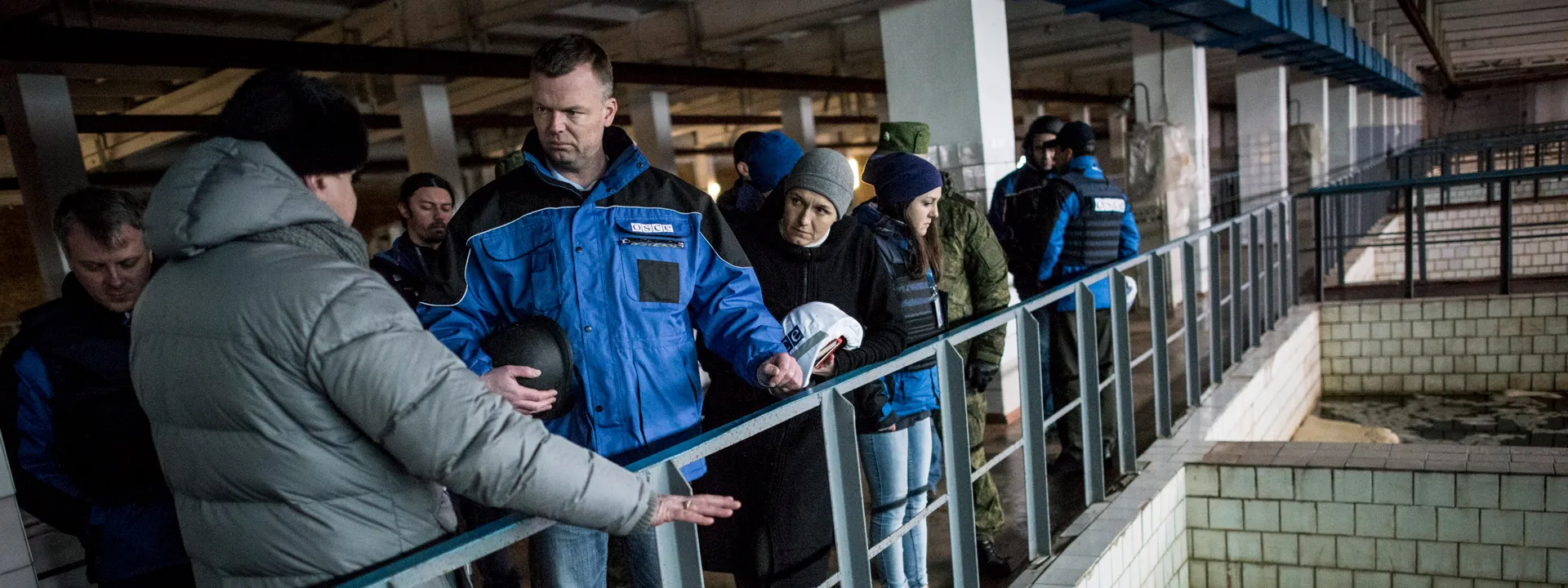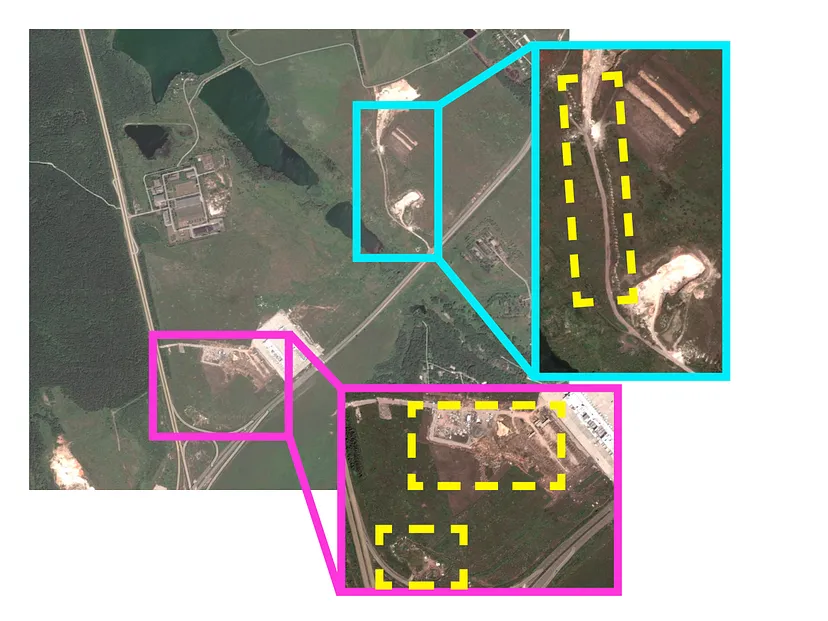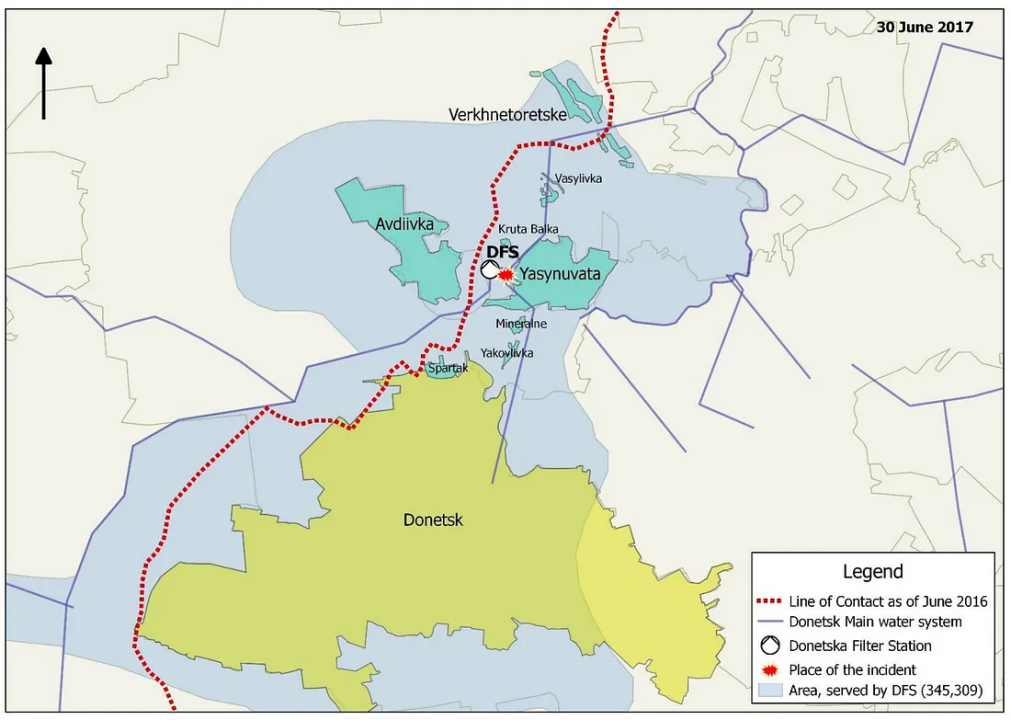
BANNER: Principal Deputy Chief Monitor of the OSCE Special Monitoring Mission (SMM) to Ukraine Alexander Hug and monitors at the Donetsk Filtration Station (DFS) in Yasynuvata, Donetsk Oblast. (Source: osce.org)
On July 22, fighting in Avdiivka cut off electricity to the Donetsk Filtration Station (DFS), leaving hundreds of thousands of civilians without water for 48 hours. The so-called “Donetsk People’s Republic” (DNR) claimed the damage was a result of fire from the Ukrainian Armed Forces (UAF), who refute the DNR’s allegation.
The filtration station continues to be a tenuous focal point in the conflict in eastern Ukraine. As @DFRLab previously reported, the DFS is frequently caught in the crossfire due to surrounding opposing military positions. In 2016, the DFS was damaged in fourteen shelling incidents. It was already involved in twelve major shelling incidents in 2017.
While the UAF are likely positioned in the nearby forest just east of the DFS, across the H20 highway, Russian-led separatist forces from the so-called DNR have at least four likely positions encircling DFS. Satellite imagery shows new trenches were created between April-May 2017 in a non-government-controlled residential area northwest of Kruta Balka. Per the Minsk Agreements, the area where these positions are located and Kruta Balka should be under government control. The UAF is often blamed for insecurity of the DFS, but this is a clear tit-for-tat scenario where Russian-led separatist forces are encroaching on Ukrainian positions and encircling the DFS.

Official reports note the DFS supplies water to at least 345,309 persons on both sides of the line of contact. This area includes Avdiivka, Kruta Balka, Vasylivka, Mineralne, Yakovlivka, Verkhniotoretske, Yasynuvata and the majority of the city of Donetsk. When DFS operations are halted due to shelling incidents, it can affect up to 1.1 million people.

Water supplies were previously disrupted by direct shelling damage to the facility itself, damage to power lines supplying electricity to the facility, and/or damage to supply pipelines. Though more of a concern during winter months than during July, city-wide heating systems cannot operate without both water and electricity. Lack of water severely damages heating systems, endangering more lives in below-freezing temperatures. This catastrophic potential was nearly realized in January 2017 due to the factors described above.
In addition to endangering the lives of hundreds of thousands of people in the immediate area, damage to the DFS poses a potential for wider civilian and environmental impact. The DFS facility houses liquified chlorine gas to use in the water treatment process. If the liquified chlorine gas was hit, it would cause clouds of poisonous gas to spread into the nearby residential areas.
The DFS is not the only facility that presents this set of threats and challenges. Several water filtration stations and treatment plants are caught in the crossfire along the line of contact. However, due to its position and its large stores of chlorine, the DFS presents a uniquely dangerous potential crisis that could have a wide-scale humanitarian impact.

